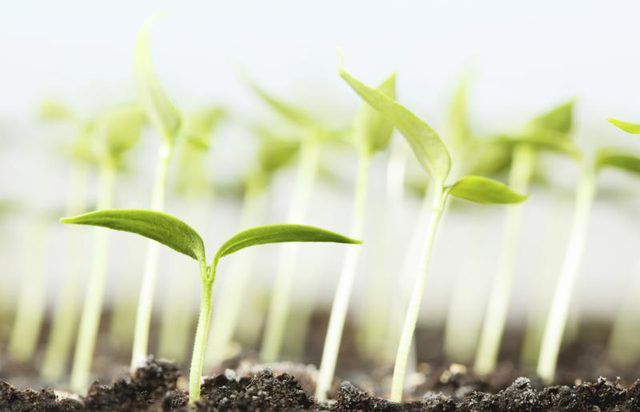Bulbs
Flower Basics
Flower Beds & Specialty Gardens
Flower Garden
Garden Furniture
Garden Gnomes
Garden Seeds
Garden Sheds
Garden Statues
Garden Tools & Supplies
Gardening Basics
Green & Organic
Groundcovers & Vines
Growing Annuals
Growing Basil
Growing Beans
Growing Berries
Growing Blueberries
Growing Cactus
Growing Corn
Growing Cotton
Growing Edibles
Growing Flowers
Growing Garlic
Growing Grapes
Growing Grass
Growing Herbs
Growing Jasmine
Growing Mint
Growing Mushrooms
Orchids
Growing Peanuts
Growing Perennials
Growing Plants
Growing Rosemary
Growing Roses
Growing Strawberries
Growing Sunflowers
Growing Thyme
Growing Tomatoes
Growing Tulips
Growing Vegetables
Herb Basics
Herb Garden
Indoor Growing
Landscaping Basics
Landscaping Patios
Landscaping Plants
Landscaping Shrubs
Landscaping Trees
Landscaping Walks & Pathways
Lawn Basics
Lawn Maintenance
Lawn Mowers
Lawn Ornaments
Lawn Planting
Lawn Tools
Outdoor Growing
Overall Landscape Planning
Pests, Weeds & Problems
Plant Basics
Rock Garden
Rose Garden
Shrubs
Soil
Specialty Gardens
Trees
Vegetable Garden
Yard Maintenance
How to Prevent Leggy Seedlings
How to Prevent Leggy Seedlings. Leggy seedlings are tall, thin and weak, but you can prevent leggy seedlings by sprouting seeds at the right temperature and by providing the right levels of light, water and fertilizer. In the plant world, tall doesn't always mean healthy; in the case of seedlings, the plants may never grow well. Often the best...

Leggy seedlings are tall, thin and weak, but you can prevent leggy seedlings by sprouting seeds at the right temperature and by providing the right levels of light, water and fertilizer. In the plant world, tall doesn't always mean healthy; in the case of seedlings, the plants may never grow well. Often the best solution to leggy seedlings is to sow more seeds and provide better conditions.
Controlling Temperature
High temperatures cause seedlings to become leggy. Most vegetable and annual plants' seeds sprout and grow best when the nighttime temperature is 60 to 65 degrees Fahrenheit and the daytime temperature is 70 to 75 F. Some cool-season annual crops and flowering plants such as cabbage (Brassica oleracea Capitata Group) and sweet pea (Lathyrus odoratus) sprout and grow best as seedlings at 55 F. If you're sprouting seeds in a propagator, set it to 75 F for most seeds. Don't place a propagator or other covered seedling container in direct sunlight because the resulting high temperature inside it is harmful to seeds and seedlings.
Providing Light
Most seeds don't need light to sprout, but after sprouting they should be placed in bright conditions to prevent legginess. As soon as seedlings appear, place their seed flats or pots in a bright spot such as a sunny, south-facing windowsill. The amount of available light can be increased, if necessary, by placing the seed flats or pots in a cardboard box that is lined with aluminum foil and has one side cut away. Face the box's cut-away side toward the window. Move the seedlings away from the window at night to protect them from low temperatures. Another option is to put the seedlings in the light from fluorescent light tubes. Place the seed flats or pots 3 to 4 inches below a fixture containing a cool white light fluorescent tube and a warm white light fluorescent tube. Leave the lights on for 14 to 16 hours each day, and raise the lights or lower the seedlings as the plants grow taller, preventing their contact with the lights, which can burn the seedlings. If some seeds in a flat haven't sprouted, cover the non-sprouted rows with strips of black plastic or dark cloth until the seedlings appear.
Spacing and Transplanting
Leggy seedlings are sometimes the result of close spacing and late transplanting. Crowded seedlings grow tall to compete for light with their neighbors. When sowing seeds in seed flats, place them in rows 1 to 2 inches apart, and sow them thinly so that when they sprout, the seedlings' leaves won't touch. If the seeds are very fine, mix them with an equal amount of loose, dry sand to help separate the seeds. When seeds sprout, they produce a set of seedling leaves followed by the first true leaves. Seedlings are ready for transplanting when the true leaves appear, which is usually about two to three weeks after seeds were sown. Fill 3-inch-diameter pots with potting soil, and transplant each seedling into its own pot, placing the seedling at the same soil depth at which it grew originally. Hold seedlings by their leaves, not their stems, and take care not to crush their stems when firming the soil around them in their pots.
Watering and Fertilizing
Overwatering and excessive nutrients from fertilizers cause leggy seedlings. Grow seedlings in containers that have bottom drainage holes. Seedlings' potting soil and soilless potting mix should be moist but never wet. Test the moisture level by taking a pinch of the growing mix and squeezing it between your fingers. Water seedlings growing in soilless potting mix when no moisture can be squeezed out of the mix, and water seedlings in potting soil when the soil doesn't feel moist when you rub it between your fingers. Water seedlings with a fine spray attachment on a watering can until water appears at the containers' drainage holes, and allow the containers to drain thoroughly. Feeding seedlings with a weak fertilizer solution at first prevents excessive growth. Dilute a water-soluble 15-30-15 fertilizer at a rate of 1/2 teaspoon per 2 gallons of water, and apply the solution to the seedlings' growing medium when the seedlings are 4 or 5 days old. Two weeks later, dilute the fertilizer at a rate of 1/2 teaspoon per 1 gallon of water, and apply the solution again and every two weeks. You can apply fertilizer solution in place of watering the seedlings if they need watering.